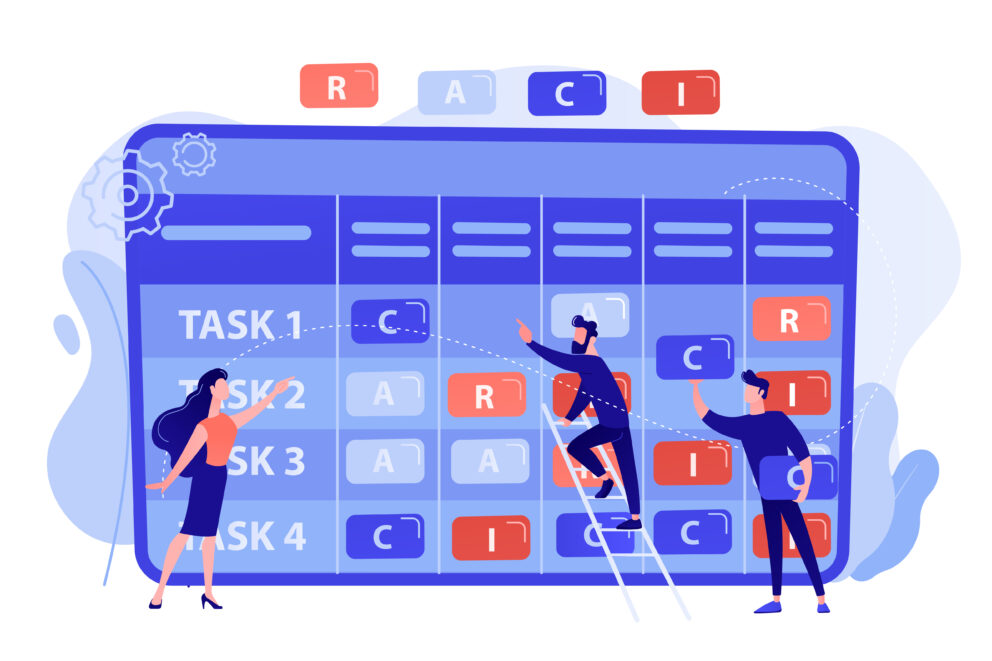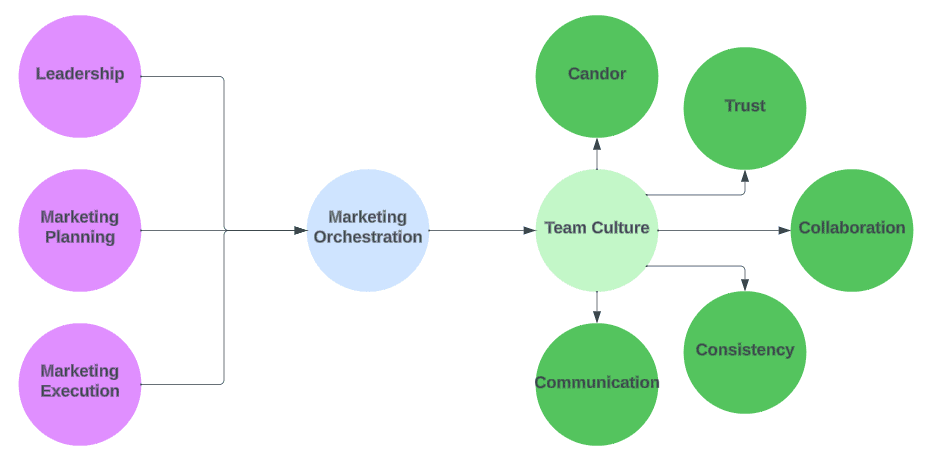Can AI streamline accountability structures? Part 2

Summary
This post walks you through part 2 of an exercise of using AI to create an accountability structure (aka RACI). I'll share the prompts I used, how I adjusted them to better fit what I wanted, and my takeaways from the experiment.
By Brenna Lofquist, Senior Marketing Consultant / Client Services Operations at Heinz Marketing
In my post last month, Can AI streamline accountability structures?, I went through an exercise where I provided ChatGPT information to see if it could create a RACI. If you didn’t read the post, the short answer is yes, however it was incomplete. I wasn’t satisfied and knew I could get more out of ChatGPT so here we are: Can AI streamline accountability structures? Part 2.
This time I provided ChatGPT a brief description of responsibilities for each role to see if it could provide a more complete RACI. The simple answer, yet again, is yes – we’re getting closer!
Takeaways
- CGPT can be used to help guide the creation of a RACI however, you should not rely solely on CGPT to do so
- If anything, using CGPT speeds up the development but it still requires a human to review and make adjustments
- This takeaway remains almost the same from the first exercise, although CGPT got much closer this time around
- The more context the better
- In addition to what I provided in the original exercise, this time around I provided more detail in terms of the job responsibilities
- To me, this point will always remain. The more information you can provide CGPT the better responses it can provide
- Using CGPT takes time
- I had a head start based on the outcome of my first exercise however, it still took me a good chunk of time to pull together the responsibilities for each role
- To be able to compare the two RACI outputs, I copied them into Excel (which was easy to do using the “Copy with formatting” option)
- I spent a little time reformatting so they were easier to read (which might be a personal preference but worth pointing out)
- I am still learning CGPT so this might be more about my experience rather than limitations of the platform
All that to say, I still believe CGPT is a tremendously helpful tool, if you spend the time to feed it plenty of information and take the time to adjust. While it’s not at the point where you can solely rely on it, it can be helpful in speeding things up and reducing time spent on tedious tasks.
Background
Now that we have covered the part people care about most, we’ll get into the nitty gritty.
For context, in the previous exercise CGPT defaulted to the first Manager role listed as the accountable party. There were multiple Manager roles provided so I can see why it might have been confused. I also did not provide any info regarding each roles’ responsibilities.
Again, I will point out that I am by no means an AI expert. I’m exploring and while I do so, I figured others could benefit so here we are.
Setup
I continued from the same CGPT conversation I used in the previous exercise. I figured that was easiest although, I have no idea if (or how) that impacts CGPT. Anyway here’s what prompt I started with:

I started with extra context based on some gaps in the previous exercise. After this I provided the list of steps in a process as well as a brief description for each role that’s mentioned in the process.
The Problem
On the first go around CGPT assigned “R” for every step in the RACI, which stands for Responsible. If you aren’t familiar with RACIs. A stands for “Accountable”, C stands for “Consulted”, and I stands for “Informed”. Each task should have at minimum one person assigned to each letter.
Here’s what I said next:

Then CGPT got the jist. Here’s a sample of what it provided:

You can see that CGPT assigned other letters beyond “R” to different roles. We’re getting even closer!
Follow Up
Although it’s getting closer it wasn’t quite there. I noticed that none of the steps/roles were assigned a “C” for Consulted. I asked CGPT why and it came back with a lengthy response.
To sum it up, CGPT said that the job descriptions provided were primarily responsible for decision-making, execution, and oversight rather than simply providing input or advice.
That’s not totally wrong and something else to keep in mind when using CGPT. It’s never going to be perfect, and I don’t necessarily have the time to feed it every single piece of information it might ever need to spit out an almost perfect RACI – I don’t think that’s possible anyway (at least not yet). This is the point where I’d bring in a human to take it the rest of the way.
More Thoughts
Overall, this was a helpful exercise for me as I learn more about how to incorporate AI into my day-to-day work. It’s a work in progress and will take time to refine in terms of my approach however, I find it very valuable!
How do you use AI in your work? If you want to chat, reach out any time brenna@heinzmarketing.com.






